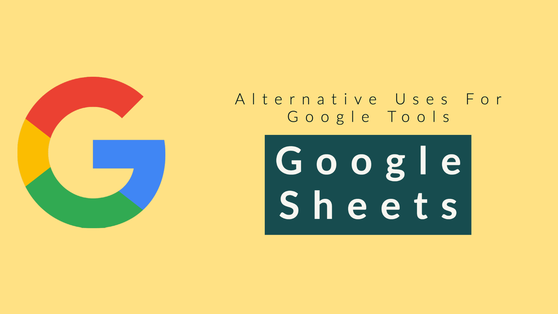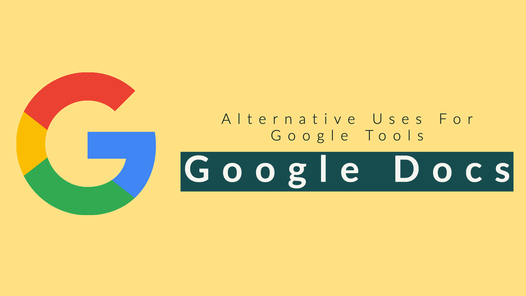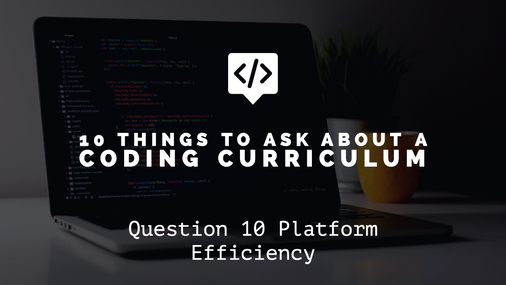|
I am terrible at Google Sheets. I know the basics, but getting creative and finding alternative ways to sheets is not my expertise. So....Let’s give you two great resources that have all kinds of great ways to use sheets.
0 Comments
It’s time to start a new series, and this one is a fun one. All the Google Tools that teachers can use have a base level of features. In Docs, you can write. In Sheets, you can analyze data, and in Slides, you can create presentations. All of those are valid in a classroom, but if you can add other functions you can grow your toolbox. Let’s start with Docs.
This is a fun series. All the Google Tools that teachers can use have a base level of features. In Docs, you can write. In Sheets, you can analyze data, and in Slides, you can create presentations. All those are valid in a classroom, but you can grow your toolbox by adding other functions. Let’s start with Docs. The beauty of Google docs is that it has three things built directly into it that make building learning experiences easier. You can now do most of those in Microsoft too, but because they are more upgrades than original features, they can feel like items that are a bit less intuitive. Those three features are easy sharing, easy, feedback, and search built directly into Google Docs. Those three features become the basis for the alternative use of docs: Hyperdocs. What is a HyperDoc? It’s an interactive document that can become the basis and process for almost any creative project. When you start a doc, you just need to look at it from an organizational state. If you use tables, you can organize them into the standard process categories such as Brainstorming, Research, Creation, Feedback. That process can contain as many steps as you want, or it can be based on an existing process like the STEM design process. Once you have that organization, you can color-code those tables to have content that students need, content where they need to respond under another, and any other needs. You can add images, text, and whatever you want to those tables. That’s where the beauty of search comes in: it allows you to add those pictures straight from the search tool in the doc. Sharing and Feedback also makes Hyperdocs more viable. If students are using them to plan creative projects, you want to share with other group members quickly, and you want to be able to share with the teacher. That quick sharing makes collaboration viable, but it also makes feedback quick. Teachers can provide that feedback as students are working through the doc, and you can even easily share for peer feedback. It becomes an additional benefit of the learning. That easy share also means that teachers can easily share these with other teachers. You can just go to https://hyperdocs.co/ to get a great look. After several months, we have finally come to the end of this series. Number 10 is also a perfect one to end on. It’s platform efficiency, but what does that actually mean? I think it speaks to the entire experience a student has with the coding curriculum in school.
Do students get the experience of using block, text, and physical components? Is there a clear pathway? Do they get to experience multiple text languages? Are student skills actually building? All of those questions can be part of a curriculum’s efficiency, and it also speaks to the broader problem of the field because most curriculums are not very efficient. As you look out on the field of coding curricula out there you see many that are either focused on one grade band or one coding language. Adding those physical components is also incredibly scattered as you either have to use that hardware proprietary software or the experience can be limited. Coding is a complex topic and most providers just don’t have the time and the resources to make more. It becomes a question of just focusing on what you are good at. These one-note providers and components then put schools in a bind from top to bottom. At the school and district level, it means that you have to purchase and manage multiple resources which isn’t realistic in a topic area that isn’t required. It also makes it tougher for teachers who aren’t natural programmers to get involved as the more things you have the more complex it is. Teachers also have more difficulty giving students a broad coding experience because they are having to pick and choose from all of the things that are out there and are limited by the resources they know. For students, having lots of different platforms can provide for a disjointed experience. They don’t have that continuous pathway that allows them to improve, and they spend more time learning new platforms than actually coding. They also can have a tougher time free coding on their own time because they don’t know where to go. What if there was a better way? What if there was a platform that had multiple languages and even included coding physical devices? What if that platform was built on skills? I am here to tell you that this platform does exist, and that efficiency is what makes it really stand out. It is such a weird time in education. Educators are under fire in the culture war that is permeating our country. Every day, you see it in the weird laws that lawmakers are coming up with that ban specific topics, require lesson plans to be turned in incredibly early, and dictate the way we talk about history, culture, and race. All while we see an unprecedented historical event in the heart of Europe with Ukraine.
I know for me, the question becomes how do we talk about this? As kids get older, the questions about the situation in Ukraine intensify and become more profound. As a teacher, can we even talk about it, though? With things like World War and Nuclear Weapons in the conversation, I think even adults have questions, so how do we parse this out to students and help them learn from the situation. How do we help them understand the conflict at a depth where they can make the right decisions if they are in charge in 10, 20, 30 years? How do we get there without setting off a political firestorm? I think the answer is to tell them the truth. To start, you have to reassure students that World War and Nuclear War are unlikely no matter what public rhetoric is said. It’s a great way to turn back to history and talk about the Cold War and how we were on the brink multiple times. In that time, leaders realized they were risking mutually assured destruction, which is likely the thought now. It’s one of the main reasons you see NATO not getting involved in a military sense. The war is also an opportunity to late out the correct events of history and let students see both sides. While it’s easy to establish a villain in the current situation in Ukraine, you also set a better understanding of history by learning and thinking through Russian intentions. If you can see their side, you can see the why, and if you can see the why our future leaders may be able to head that off at the pass in the future. It gets to the heart of what history should be. It should be a retelling of history while looking at both sides. Students should see the messy and the terrible. If we only teach the positive in history, we miss almost all of that. I also don’t think taking this approach messes with establishing patriotism in our children. You have to make history appropriate at the student's level, and young children can still start with heroes and loving the American flag. Then as they get older, you transition it into an appreciation of American survival no matter how messy extreme things got. This war in Ukraine is ugly and horrible, and it’s not something we as history teachers can stay away from, though. We just need to talk about it in the right way, and hopefully, we can use it as a proof point that educators can talk about hard things. |
Archives
January 2023
Categories |




 RSS Feed
RSS Feed
